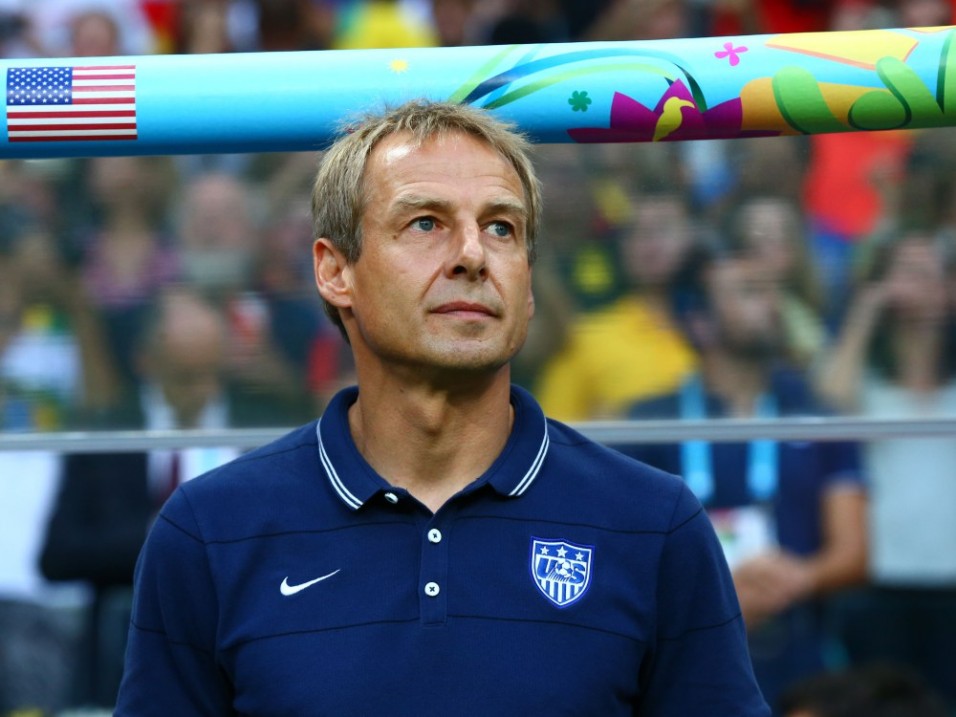This is Jurgen Klinsmann’s team.
It’s the one aspect of the United States national team that has been clear since Klinsmann named his 23-man roster for the World Cup. Just six players from the 2010 U.S. roster remain. Replaced with a backbone of players who have only known Klinsmann as the national team coach.
If the U.S. was going to advance out of the Group of Death, it was going to do it on Klinsmann’s terms and with his players. The terms were set, the players chosen, and now standing opposite Belgium in the second round of the tournament, it can’t be disputed that the team Jurgen built has proven itself.
He brought in forgotten talent.
Midfielder Kyle Beckerman played 10 matches for the U.S. from 2007-09. After leading Real Salt Lake to the 2009 Major League Soccer championship, Beckerman was called into the national team again in 2010. He played twice, both matches exhibitions, and was left off the 2010 World Cup roster.
If it seemed like Beckerman’s career with the national team was over after the 2010 World Cup, that’s because it was. Beckerman would be 32 in 2014. That’s hardly the age a coach would want to develop an international-caliber center midfielder for the World Cup, and with Michael Bradley already in that role there was no need for Beckerman.
Klinsmann flipped the narrative on its head, using 2011 to reintroduce Beckerman to the national team. The dreadlocked 32-year-old just finished playing what may go down as the three best games of his career against Ghana, Portugal, and Germany.
Beckerman isn’t the only player Klinsmann brought back into the fold either. Mix Diskerud, Omar Gonzalez, Graham Zusi, and Chris Wondolwoski had 11 caps between them entering 2013. Since that time, those four players have played in 66 matches for the U.S.
He developed youth.
Aron Johannsson, Matt Besler, and John Brooks hadn’t played a single match for the U.S. until 2013. Johannsson replaced an injured Jozy Altidore against Ghana, Besler has been a phenomenal anchor in the U.S. defense, and unless you were under a rock, you know it was Brooks who headed home the game-winning goal in the U.S.’s first match of this World Cup.
Klinsmann has invested in the future as much as he has brought back the forgotten past, bringing eight players under 25 to the World Cup. All but two of those players (Diskerud and Julian Green) have appeared for the U.S. in the tournament.
These eight players form a foundation Klinsmann can build upon for not only the 2018 World Cup but potentially 2022 as well.
He got rid of Landon Donovan.
It wasn’t a popular decision when Klinsmann announced it, but leaving the most decorated player in U.S. soccer history off the U.S. World Cup roster has proven sound.
There is no question that Landon Donovan is still capable of playing at the international level. There’s also little doubt that Donovan would likely have made an impact, especially in light of Altidore’s injury. However, Donovan was a hallmark of the previous decade’s World Cup campaigns, bigger than the team itself, and ran counter to the archetype Klinsmann has come to expect from his veteran players. The U.S. needed experienced players, just not that experienced player.
Klinsmann made the decision to sacrifice one for the good of many. It was a gamble, and if the U.S. had failed to escape its group you can be sure that Klinsmann’s dismissal of Donovan would have been at the center of the scrutiny.
But the gamble paid off, the U.S. advanced, and now the Donovan story isn’t even a story.
He defined his veterans.
Klinsmann has set very calculated expectations for DaMarcus Beasley, Tim Howard, Michael Bradley, and captain Clint Dempsey. You can see it the way each player interacts with the media during and after matches. No one rocks the boat, no one steps outside the team, everyone plays a role.
Dempsey scored a goal in 30 seconds, broke his nose, and was an American hero after the opening match against Ghana. And after the press conference he was required to attend immediately following the game because he was man of the match, Dempsey didn’t speak to reporters in Brazil again until after the match against Portugal.
In Klinsmann’s eyes, there are no stars on this U.S. team, even if the rest of the world sees things differently.
He’s set the focus on himself.
In a country that is used to seeing its athletes in a 24-hour spotlight, Klinsmann has taken the attention and focused it squarely upon himself.
It may seem arrogant, but it’s a tactic often used by European coaches. The logic is that the more attention and pressure placed on the coach, the easier it is for the team to focus. It’s a strategy that has proven effective for the U.S. so far, even if it makes for a rather one-dimensional narrative.
Those are the terms Klinsmann has set forth, and as long as the U.S. keeps finding success, it’s hard to argue with any of them.

